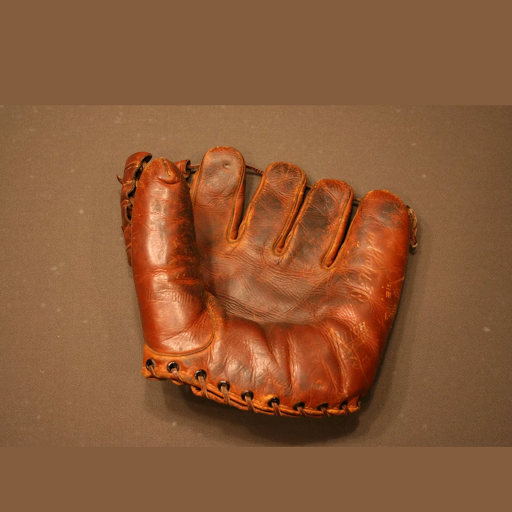Christopher S Churchill
age ~61
from Sacramento, CA
- Also known as:
-
- Christopher Scott Churchill
- Christopher K Churchill
- Chris Churchill
- Christoph S Churchill
- Chirstophe S Churchill
- Christophe S Churchill
- Christopher S Chuchill
- Christopher S Churchhill
- Christopher Churchil
- Phone and address:
-
1188 13Th Ave, Sacramento, CA 95822
9164447440
Christopher Churchill Phones & Addresses
- 1188 13Th Ave, Sacramento, CA 95822 • 9164447440
- Carpinteria, CA
- Troy, MI
- Dallas, TX
- New Bedford, MA
Work
-
Company:Barley Snyder
-
Address:
Education
-
Degree:JD - Juris Doctor
-
School / High School:University of Georgia
Ranks
-
Licence:Georgia - Active Member in Good Standing
-
Date:2010
Specialities
Corporate & Incorporation • Business Law • Health Law • Antitrust & Securities Litigation • Higher Education
Us Patents
-
Fire-Resistant Material And Method Of Manufacture
view source -
US Patent:20020162298, Nov 7, 2002
-
Filed:May 4, 2001
-
Appl. No.:09/848792
-
Inventors:Christopher Churchill - Sacramento CA, US
Charles Likes - Yuba City CA, US
Theodore Bauer - Central Point OR, US -
International Classification:E06B001/04
E04C002/38 -
US Classification:052/783120, 052/784100, 052/204100, 052/455000, 052/656400
-
Abstract:The present invention provides a building material derived from straw, such as rice straw, that has significantly improved fire-resistance properties over traditional cellulose-based materials. In one embodiment, the invention provides a method of fabricating a board from milled rice straw. The milled rice straw is blended with a binder to form a mixture. The mixture is then formed into a mat with sufficient size to achieve a predetermined board thickness and density. The mat is then pressed into the board. In another embodiment, the present invention provides a fire resistant board that includes milled rice straw, a resin binder, and a fire retardant material such as an organic phosphate, zinc borate, aluminum tribydrate, sodium silicate, or even rice hulls.
-
Fire-Resistant Material And Method Of Manufacture
view source -
US Patent:20050258561, Nov 24, 2005
-
Filed:Mar 7, 2005
-
Appl. No.:11/074311
-
Inventors:Christopher Churchill - Sacramento CA, US
Charles Likes - Yuba City CA, US
Theodore Bauer - Central Point OR, US -
Assignee:FiberTech, Inc. - Colusa CA
GREENCOR COMPOSITES, LLC - SACRAMENTO CA -
International Classification:B27N003/00
-
US Classification:264109000, 156296000
-
Abstract:The present invention provides a building material derived from straw, such as rice straw, that has significantly improved fire-resistance properties over traditional cellulose-based materials. In one embodiment, the invention provides a method of fabricating a board from milled rice straw. The milled rice straw is blended with a binder to form a mixture. The mixture is then formed into a mat with sufficient size to achieve a predetermined board thickness and density. The mat is then pressed into the board. In another embodiment, the present invention provides a fire resistant board that includes milled rice straw, a resin binder, and a fire retardant material such as an organic phosphate, zinc borate, aluminum trihydrate, sodium silicate, or even rice hulls.
-
Fire-Resistant Wall And Method Of Manufacture
view source -
US Patent:20060174798, Aug 10, 2006
-
Filed:Dec 5, 2005
-
Appl. No.:11/294292
-
Inventors:Christopher Churchill - Sacramento CA, US
-
Assignee:GREENCOR COMPOSITES, LLC - SACRAMENTO CA
-
International Classification:C09D 5/20
-
US Classification:106002000
-
Abstract:The present invention is a fire-retardant wall having a fire-resistance rating of a least two hours and a method of making such a fire-retardant wall. The fire-retardant wall includes a first layer comprising an inner core, typically made of an insulated panel used in construction of buildings, and at least one second layer on each side of first layer, the at least one second layer further comprising at least one fire-resistant board of pressed milled straw, thereby forming the fire-retardant wall having a fire-resistance rating of at least two-hours. The second layer may also include a structural board used as a building panel in construction of buildings and/or an interior wall board used for internal and external walls and ceilings of buildings, wherein such boards are positioned on the exterior side of at least one board of pressed milled straw.
-
Energy Harvesting System
view source -
US Patent:20120216522, Aug 30, 2012
-
Filed:Dec 30, 2011
-
Appl. No.:13/340886
-
Inventors:Alan L. Browne - Grosse Pointe MI, US
Nancy L. Johnson - Northville MI, US
Paul W. Alexander - Ypsilanti MI, US
John Andrew Shaw - Dixter MI, US
Christopher Burton Churchill - Ann Arbor MI, US
Andrew C. Keefe - Encino CA, US
Geoffrey P. McKnight - Los Angeles CA, US
Guillermo A. Herrera - Winnetka CA, US
Nilesh D. Mankame - Ann Arbor MI, US
Richard J. Skurkis - Lake Orion MI, US
Wayne Brown - Costa Mesa CA, US -
Assignee:GM GLOBAL TECHNOLOGY OPERATIONS LLC - Detroit MI
The Regents of the University of Michigan - Ann Arbor MI
DYNALLOY, INC. - Tustin CA -
International Classification:F03G 7/06
-
US Classification:60527
-
Abstract:An energy harvesting system for converting thermal energy to mechanical energy includes a heat engine that operates using a shape memory alloy active material. The shape memory alloy member may be in thermal communication with a hot region at a first temperature and a cold region at a second temperature lower than the first temperature. The shape memory alloy material may be configured to selectively change crystallographic phase between martensite to austenite and thereby one of contract and expand in response to the first and second temperatures. A thermal conduction element may be in direct contact with the SMA material, where the thermal conduction element is configured to receive thermal energy from the hot region and to transfer a portion of the received thermal energy to the SMA material through conduction.
-
Energy Harvesting System
view source -
US Patent:20120216523, Aug 30, 2012
-
Filed:Dec 30, 2011
-
Appl. No.:13/340892
-
Inventors:Alan L. Browne - Grosse Pointe MI, US
Nancy L. Johnson - Northville MI, US
Nilesh D. Mankame - Ann Arbor MI, US
Paul W. Alexander - Ypsilanti MI, US
John Andrew Shaw - Dexter MI, US
Christopher Burton Churchill - Ann Arbor MI, US
Andrew C. Keefe - Encino CA, US
Geoffrey P. Mc Knight - Los Angeles CA, US
Guillermo A. Herrera - Winnetka CA, US
Jeffrey W. Brown - Los Gatos CA, US
Peter Maxwell Sarosi - Royal Oak MI, US
Richard J. Skurkis - Lake Orion MI, US -
International Classification:F03G 7/06
-
US Classification:60527
-
Abstract:An energy harvesting system for converting thermal energy to mechanical energy includes a heat engine that operates using a shape memory alloy active material. The shape memory alloy member may be in thermal communication with a hot region at a first temperature and a cold region at a second temperature lower than the first temperature. The shape memory alloy material may be configured to selectively change crystallographic phase between martensite to austenite and thereby one of contract and expand in response to the first and second temperatures. A driven component, such as an electric generator, may be selectively coupled with the heat engine through a coupling device, which may be controlled via a controller.
-
Method Of Starting And Operating A Shape Memory Alloy Heat Engine
view source -
US Patent:20120216525, Aug 30, 2012
-
Filed:Dec 30, 2011
-
Appl. No.:13/340897
-
Inventors:Alan L. Browne - Grosse Pointe MI, US
Nancy L. Johnson - Northville MI, US
Nilesh D. Mankame - Ann Arbor MI, US
Paul W. Alexander - Ypsilanti MI, US
John Andrew Shaw - Dexter MI, US
Christopher Burton Churchill - Ann Arbor MI, US
Andrew C. Keefe - Encino CA, US
Guillermo A. Herrera - Winnetka CA, US
Jeffrey W. Brown - Los Gatos CA, US
Richard J. Skurkis - Lake Orion MI, US -
International Classification:F03G 7/06
-
US Classification:60528
-
Abstract:A shape memory alloy (SMA) heat engine includes a first rotatable pulley, a second rotatable pulley, and an SMA material disposed about the first and second rotatable pulleys and between a hot region and a cold region. A method of starting and operating the SMA heat engine includes detecting a thermal energy gradient between the hot region and the cold region using a controller, decoupling an electrical generator from one of the first and second rotatable pulleys, monitoring a speed of the SMA material about the first and second rotatable pulleys, and re-engaging the driven component if the monitored speed of the SMA material exceeds a threshold. The SMA material may selectively change crystallographic phase between martensite and austenite and between the hot region and the cold region to convert the thermal gradient into mechanical energy.
-
Shape Memory Alloy Heat Engines And Energy Harvesting Systems
view source -
US Patent:20120216526, Aug 30, 2012
-
Filed:Dec 30, 2011
-
Appl. No.:13/340942
-
Inventors:Alan L. Browne - Grosse Pointe MI, US
Nancy L. Johnson - Northville MI, US
John Andrew Shaw - Dexter MI, US
Christopher Burton Churchill - Ann Arbor MI, US
Andrew C. Keefe - Encino CA, US
Geoffrey P. Mc Knight - Los Angeles CA, US
Paul W. Alexander - Ypsilanti MI, US
Peter Maxwell Sarosi - Royal Oak MI, US
Nilesh D. Mankame - Ann Arbor MI, US
Wayne Brown - Costa Mesa CA, US
Guillermo A. Herrera - Winnetka CA, US
Richard J. Skurkis - Lake Orion MI, US -
International Classification:F03G 7/06
-
US Classification:60529
-
Abstract:An energy harvesting system in thermal communication with a hot region and a cold region includes a hot end heat engine in thermal communication with the hot region, a cold end heat engine in thermal communication with the cold region, and an intermediate heat engine disposed between the hot end heat engine and the cold end heat engine. The hot end heat engine includes a hot end shape memory alloy (SMA) element, the cold end heat engine includes a cold end SMA element disposed, and the intermediate heat engine includes an intermediate SMA element. A hot side of the intermediate SMA element is in thermal communication with a cold side of the hot end SMA element. A cold side of the intermediate SMA element is in thermal communication with a hot side of the cold end SMA element.
-
Methodology And Mechanisms For Enhancing High Ambient Temperature Performance In Shape Memory Alloy Applications
view source -
US Patent:20140007572, Jan 9, 2014
-
Filed:Nov 29, 2012
-
Appl. No.:13/688863
-
Inventors:Shivaram AC - Bangalore, IN
Ashish KHANDELWAL - Bangalore, IN
Christopher B. CHURCHILL - Ventura CA, US -
Assignee:GM GLOBAL TECHNOLOGY OPERATIONS LLC - Detroit MI
-
International Classification:F03G 7/06
-
US Classification:60529, 60527
-
Abstract:An actuator comprising an SMA element and a thermally responsive element that adjusts bias stress improves high ambient temperature operation.
Name / Title
Company / Classification
Phones & Addresses
President
N M C Enterprises Inc
Whol Contact Lenses Chemicals Cable Television Equipment Poultry Equipment Parts for Testing Equipment & Consulting Svcs
Whol Contact Lenses Chemicals Cable Television Equipment Poultry Equipment Parts for Testing Equipment & Consulting Svcs
225 30 St, Sacramento, CA 95816
SANDBLASTING STAINED GLASS, LC
President
NMC ENTERPRISES, INC
20 Main Ave STE 5, Sacramento, CA 95838
Director , VP
D&C HYDRAULICS INC
2838 Woodside St STE 206, Dallas, TX 75204
2626 Cole Ave, Dallas, TX 75204
2626 Cole Ave, Dallas, TX 75204
Director, President
RIMPORTS INC
225 30 St STE 302, Sacramento, CA 95816
General Partner
Curtess Partners, Ltd
3923 Hawthorne Ave, Dallas, TX 75219
MM, Mgr
SYMMEI L L C
2626 Cole Ave STE 429, Dallas, TX 75204
2838 Woodside St STE 206, Dallas, TX 75204
2838 Woodside St STE 206, Dallas, TX 75204
Secretary
DALLAS CONSULTING ASSOCIATES INC
1563 Mdw Cir, Carpinteria, CA 93013
1188 13 Ave, Sacramento, CA 95822
1188 13 Ave, Sacramento, CA 95822
Resumes
Lawyers & Attorneys

Christopher John Churchill - Lawyer
view sourceLicenses:
Georgia - Active Member in Good Standing 2010
Experience:
Assistant Attorney General at Office of the Attorney General - 2013-present
Associate Attorney at King and Spalding - 2012-2013
Law Clerk to Senior U.S. District Judge William C. O'Kelley at US District Court, Northern District of Georgia - 2010-2012
Associate Attorney at King and Spalding - 2012-2013
Law Clerk to Senior U.S. District Judge William C. O'Kelley at US District Court, Northern District of Georgia - 2010-2012
Education:
University of Georgia
Degree - JD - Juris Doctor - Law
Graduated - 2010
Degree - JD - Juris Doctor - Law
Graduated - 2010
Languages:
English
Associations:
Federal Bar Association (Atlanta chapter), 2011-present
State Bar of Georgia, 2010-present
State Bar of Georgia, 2010-present

Christopher Churchill - Lawyer
view sourceOffice:
Barley Snyder
Specialties:
Corporate & Incorporation
Business Law
Health Law
Antitrust & Securities Litigation
Higher Education
Business Law
Health Law
Antitrust & Securities Litigation
Higher Education
ISLN:
908385025
Admitted:
1986
University:
University of Virginia, B.S.; Wharton School
Law School:
Villanova University School of Law, J.D.
Googleplus

Christopher Churchill
Lived:
Chicago
Springfield, Il
Honolulu, HI
Dallas, Tx
Springfield, Il
Honolulu, HI
Dallas, Tx
Work:
Dsi Associates - Construction Management (2006)
Education:
University of Hawaii - Chemistry, Elmhurst College - Business Management

Christopher Churchill

Christopher Churchill
Youtube
Myspace
Flickr
Classmates

Christopher Churchill
view sourceSchools:
Cornwall Academy Great Barrington MA 1967-1969
Community:
Robert Genchi, Gary Brenckman, Joyce Reeves, Christine Berkhout

Christopher Churchill
view sourceSchools:
Burrillville High School Harrisville RI 1986-1990
Community:
Melania Melody, Michael Conrardy, Kimberly Brann, Robin Blanchette

Christopher Churchill
view sourceSchools:
Inola High School Inola OK 1986-1990
Community:
Brian Davenport, Josh Lee, Steve Peterson, Glennette Nelson, John Fair, Travis Hess, Tracy Self, Lori Hunter, Averie Chasteen, Kim Beggs, Cheryl Ross

Cornwall Academy, Great b...
view sourceGraduates:
Chris Churchill (1965-1969),
Rex Kirkman (1970-1971),
Frank McArthur (1962-1966),
Ronald Angelone (1955-1959)
Rex Kirkman (1970-1971),
Frank McArthur (1962-1966),
Ronald Angelone (1955-1959)

Yarmouth Consolidated Hig...
view sourceGraduates:
Chris Churchill (1985-1989),
Jeryne Abel (1965-1966),
Shelley Welner (1984-1988),
Heather Eyre (1959-1963),
Earlene Crowell (1968-1972)
Jeryne Abel (1965-1966),
Shelley Welner (1984-1988),
Heather Eyre (1959-1963),
Earlene Crowell (1968-1972)

Inola High School, Inola,...
view sourceGraduates:
Christopher Churchill (1986-1990),
Judy Medlock (1962-1966),
Lawrence Brown (2003-2007)
Judy Medlock (1962-1966),
Lawrence Brown (2003-2007)

Cameron Heights Collegiat...
view sourceGraduates:
Chris Churchill (1993-1997),
Bob Smith (1977-1981),
Tim Hartman (1969-1971),
Dirk Miggler (1992-1996),
Randy Straeten (1984-1988),
Sanja Lakovic (1998-2002)
Bob Smith (1977-1981),
Tim Hartman (1969-1971),
Dirk Miggler (1992-1996),
Randy Straeten (1984-1988),
Sanja Lakovic (1998-2002)

O'Brien Vocational Techni...
view sourceGraduates:
Chris Churchill (1988-1992),
William Boyne (1994-1998),
Roger Hernandez (1990-1994)
William Boyne (1994-1998),
Roger Hernandez (1990-1994)

Christopher Churchill
view source
Christopher Churchill
view source
Scott Christopher Churchill
view source
Christopher Churchill
view source
Christopher Churchill
view source
Christopher Churchill
view source
Christopher John Churchill
view source
Christopher Churchill
view sourceGet Report for Christopher S Churchill from Sacramento, CA, age ~61















